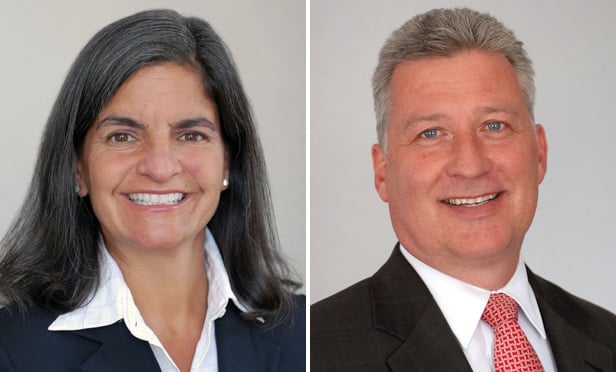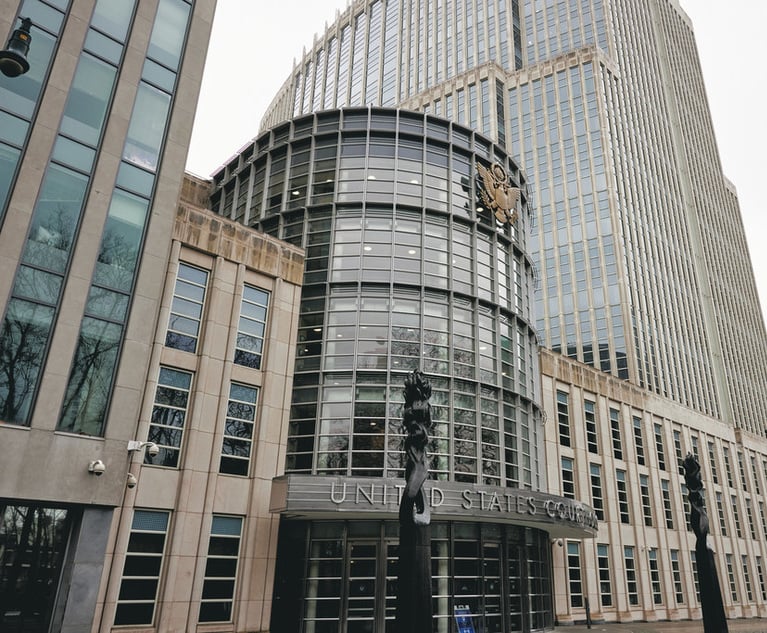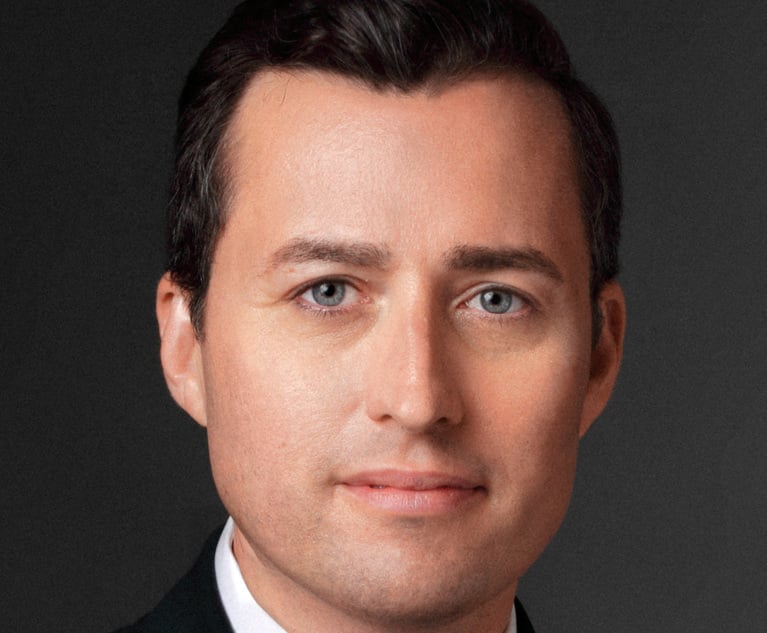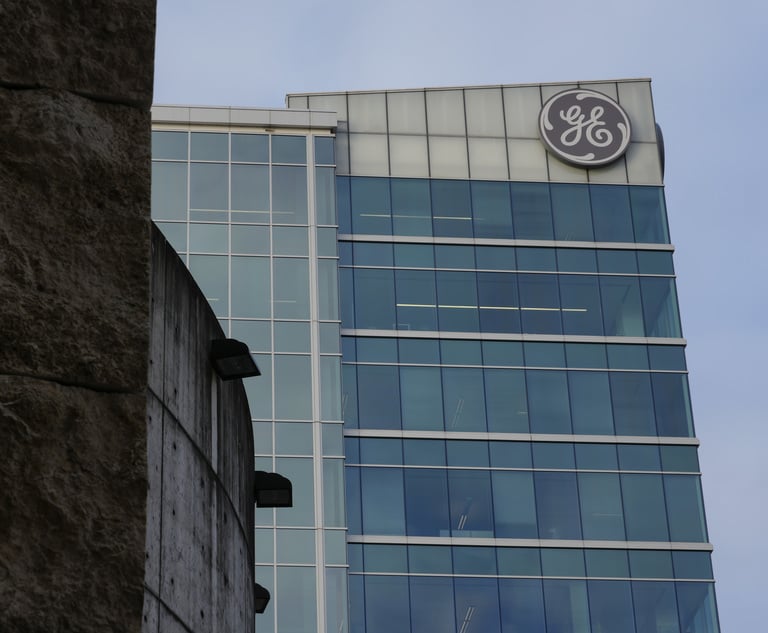'High-Low' Settlements: Insurance Against Bad Faith Claims
In this new era of personal injury "nuclear verdicts" that far exceed policy limits, insurance companies are searching for protection. The underutilized offer of a "high-low" agreement provides that protection.
November 21, 2019 at 11:45 AM
7 minute read
 Andrea M. Alonso and Kevin G. Faley
Andrea M. Alonso and Kevin G. Faley
In this new era of personal injury "nuclear verdicts" that far exceed policy limits, insurance companies are searching for protection. The underutilized offer of a "high-low" agreement provides that protection. A "high-low" agreement is in fact a conditional settlement. When a jury renders a verdict, this condition is triggered and the "high" or the "low" (or a number in between) becomes binding upon the parties and is considered a settlement.
Definition
A high-low agreement is simply an agreement in which the parties stipulate that, regardless of the jury verdict, the plaintiff will either receive the low amount, the high amount or an amount in between these two numbers. For example, if the parties agree to a high-low of $1 million/$100,000, then plaintiff will still receive the low of $100,000 if a defense verdict is rendered. If the verdict is $3 million, or any amount above the "high," the defendant will only have to pay the $1 million. And, if the jury returns a monetary award between these two numbers, say $500,000, then the plaintiff will receive that amount. High-low agreements must be in writing or made in open court on the record.
Bad Faith and High-Low Agreements
'Vecchione'. Not only does a high-low agreement protect an insurance company and its insured, it can also bar a bad faith claim where there is a verdict that exceeds the policy limits. The Second Department in Vecchione v. Amica Mutual Insurance Company, 274 A.D.2d 576 (2d Dept. 2000) held that the insurer's offering a "high-low" settlement in response to a demand for policy limits did not evidence gross disregard of the insured's rights and thus was not a bad faith refusal to settle within the policy limits.
The underlying personal injury action arose from a two-car collision between a vehicle owned by Vecchione and one owned by defendant Kossman. Kathleen and Patricia Neary, passengers in the Kossman vehicle, were comatose and confined to a wheelchair, respectfully, as a result of the crash. Amica Mutual Insurance Company had a single limit policy of $300,000. At a pre-trial conference, the Amica claim supervisor sought authority to offer the Nearys a "high-low" agreement. The terms were that the Nearys would receive the full policy limits after the liability phase of the trial if defendant Vecchione was found to be at fault. Amica would still pay $100,000 even if the jury found no liability on Vecchione's part.
Prior to trial, plaintiff's counsel sent a demand letter to counsel for Vecchione seeking tender of the policy limit within 48 hours or the settlement offer would be withdrawn. The claim supervisor responded by presenting the "high-low" proposal, which was not only rejected by plaintiff's counsel, but counsel refused to even discuss it with his clients.
The jury rendered a $1.5 million verdict, holding the defendant Vecchione 5% at fault. A bad faith action was commenced against Amica by the Vecchiones and the Nearys, as assignees. The jury found that Amica's failure to offer its full policy was a gross disregard of the Vecchione's interest and thus constituted bad faith, and Amica was responsible for the entire $1.5 million verdict. The trial court set aside the verdict and the Second Department reviewed the decision and affirmed the trial court.
The Appellate Court held that bad faith by an insurance company is defined as conduct constituting "a gross disregard of the policy holder's interest—that is, a deliberate or reckless failure to place on an equal footing its own interests and those of the policyholder when considering a settlement offer" (citing Pavia v. State Farm Mut. Auto Ins. Co., 82 N.Y.2d 445, 452, (1993)). "In other words, a bad-faith plaintiff must establish that the defendant insurer engaged in a pattern of behavior evincing a conscious or knowing indifference to the probability that an insured would be held personally accountable for a large judgment if a settlement offer within the policy limits were not accepted." Pavia, 82 N.Y.2d 453-54.
The court in Vecchione found that Amica's offer of the "high-low" agreement in response to the Neary's demand letter "clearly negates a finding that its refusal to tender the policy limits amounted to a deliberate or reckless failure to place the policy holder's interests on an equal footing with its own. Rather, the evidence demonstrates that Amica made the proposal for the purpose of protecting the policy holder from a potential excess judgment."
Accordingly, it is clear that the ruling in Vecchione provides that a "high-low" agreement put on the record and refused by plaintiff's counsel that offers the entire policy limits as a high cannot be interpreted as bad faith on behalf of the insurance company holding them responsible for a verdict in excess of the policy limits.
'Doherty'. Similarly, in Doherty v. Merchant's Mutual Insurance Company, 74 A.D.3d 1870 (4th Dept. 2010) the Fourth Department found that in a case where the "high-low" offer was made after the trial was commenced, the insurance company would not be held to have grossly disregarded its insured's interest. In Doherty, the policy limits were $300,000. Plaintiff's demand was $240,000 and the offer never exceeded $55,000. The "high-low" offer at trial was "not well received" and rejected.
The dissent in Doherty argued that the "high-low" offer made four days after the trial commenced did not exonerate the carrier from a "pre-existing" liability for bad faith failure to settle within the policy limits. The "high-low" offer was but a factor for the jury to consider on the question of bad faith.
When the 'high' is not the policy limit. While these two cases concern a high-low agreement where the high is the policy limit, what if the high was set at plaintiff's demand, even though the policy limit is higher?
Let's say the plaintiff's demand was $750,000, the insurance carrier's offer was $150,000, the policy limit was $1 million and the high-low put forth by the carrier was $150,000/$750,000. Would there be bad faith if plaintiff rejected that offer? While there are no cases on point, it would appear that this proposal would demonstrate an attempt to protect the policy holder from an excess judgment and would not constitute bad faith.
Conclusion
Based on Vecchione and Doherty, in order to defeat a bad faith claim, an insurer should:
- offer a "high-low" agreement before the trial begins or as soon thereafter as possible;
- offer the full policy limits as the high.
- place the offer and rejection of the offer on the record;
This litigation tool will ensure that that if the jury renders a verdict in excess of the policy, the timely and properly placed "high-low" agreement will not only protect its insured but will protect the carrier from a bad faith claim and responsibility to pay an excess verdict. All carriers should develop this strategy: to offer a "high-low" when a possible runaway verdict looms large. Even if the plaintiff rejects the "high-low," the carrier has taken appropriate steps to insure that it will not be responsible for an excess verdict.
Andrea M. Alonso and Kevin G. Faley are partners in the firm of Morris Duffy Alonso & Faley.
This content has been archived. It is available through our partners, LexisNexis® and Bloomberg Law.
To view this content, please continue to their sites.
Not a Lexis Subscriber?
Subscribe Now
Not a Bloomberg Law Subscriber?
Subscribe Now
NOT FOR REPRINT
© 2025 ALM Global, LLC, All Rights Reserved. Request academic re-use from www.copyright.com. All other uses, submit a request to [email protected]. For more information visit Asset & Logo Licensing.
You Might Like
View All
Insurance Company Sues Over 180 Health Care Providers for Fraud Under RICO
3 minute read
New York Court of Appeals Tightens Pleading Standards Against Insurance Policyholder
7 minute read
Amid Growing Litigation Volume, Don't Expect UnitedHealthcare to Change Its Stripes After CEO's Killing
6 minute read
GE Agrees to $362.5M Deal to End Shareholder Claims Over Power, Insurance Risks
2 minute readTrending Stories
Who Got The Work
J. Brugh Lower of Gibbons has entered an appearance for industrial equipment supplier Devco Corporation in a pending trademark infringement lawsuit. The suit, accusing the defendant of selling knock-off Graco products, was filed Dec. 18 in New Jersey District Court by Rivkin Radler on behalf of Graco Inc. and Graco Minnesota. The case, assigned to U.S. District Judge Zahid N. Quraishi, is 3:24-cv-11294, Graco Inc. et al v. Devco Corporation.
Who Got The Work
Rebecca Maller-Stein and Kent A. Yalowitz of Arnold & Porter Kaye Scholer have entered their appearances for Hanaco Venture Capital and its executives, Lior Prosor and David Frankel, in a pending securities lawsuit. The action, filed on Dec. 24 in New York Southern District Court by Zell, Aron & Co. on behalf of Goldeneye Advisors, accuses the defendants of negligently and fraudulently managing the plaintiff's $1 million investment. The case, assigned to U.S. District Judge Vernon S. Broderick, is 1:24-cv-09918, Goldeneye Advisors, LLC v. Hanaco Venture Capital, Ltd. et al.
Who Got The Work
Attorneys from A&O Shearman has stepped in as defense counsel for Toronto-Dominion Bank and other defendants in a pending securities class action. The suit, filed Dec. 11 in New York Southern District Court by Bleichmar Fonti & Auld, accuses the defendants of concealing the bank's 'pervasive' deficiencies in regards to its compliance with the Bank Secrecy Act and the quality of its anti-money laundering controls. The case, assigned to U.S. District Judge Arun Subramanian, is 1:24-cv-09445, Gonzalez v. The Toronto-Dominion Bank et al.
Who Got The Work
Crown Castle International, a Pennsylvania company providing shared communications infrastructure, has turned to Luke D. Wolf of Gordon Rees Scully Mansukhani to fend off a pending breach-of-contract lawsuit. The court action, filed Nov. 25 in Michigan Eastern District Court by Hooper Hathaway PC on behalf of The Town Residences LLC, accuses Crown Castle of failing to transfer approximately $30,000 in utility payments from T-Mobile in breach of a roof-top lease and assignment agreement. The case, assigned to U.S. District Judge Susan K. Declercq, is 2:24-cv-13131, The Town Residences LLC v. T-Mobile US, Inc. et al.
Who Got The Work
Wilfred P. Coronato and Daniel M. Schwartz of McCarter & English have stepped in as defense counsel to Electrolux Home Products Inc. in a pending product liability lawsuit. The court action, filed Nov. 26 in New York Eastern District Court by Poulos Lopiccolo PC and Nagel Rice LLP on behalf of David Stern, alleges that the defendant's refrigerators’ drawers and shelving repeatedly break and fall apart within months after purchase. The case, assigned to U.S. District Judge Joan M. Azrack, is 2:24-cv-08204, Stern v. Electrolux Home Products, Inc.
Featured Firms
Law Offices of Gary Martin Hays & Associates, P.C.
(470) 294-1674
Law Offices of Mark E. Salomone
(857) 444-6468
Smith & Hassler
(713) 739-1250






